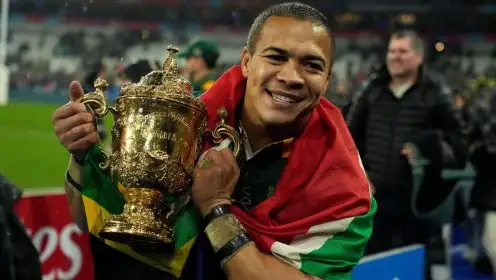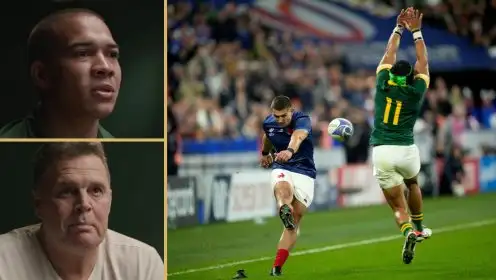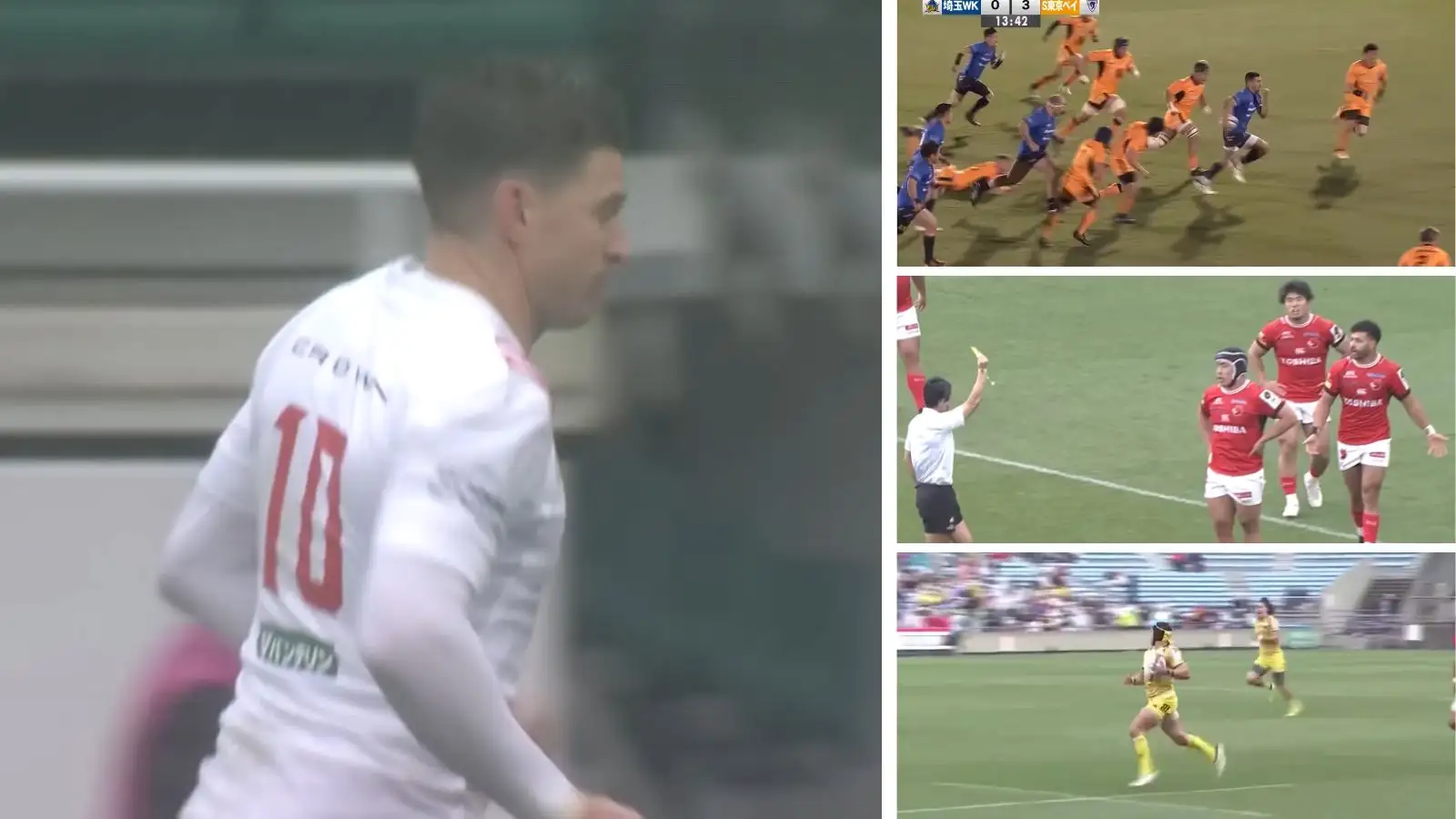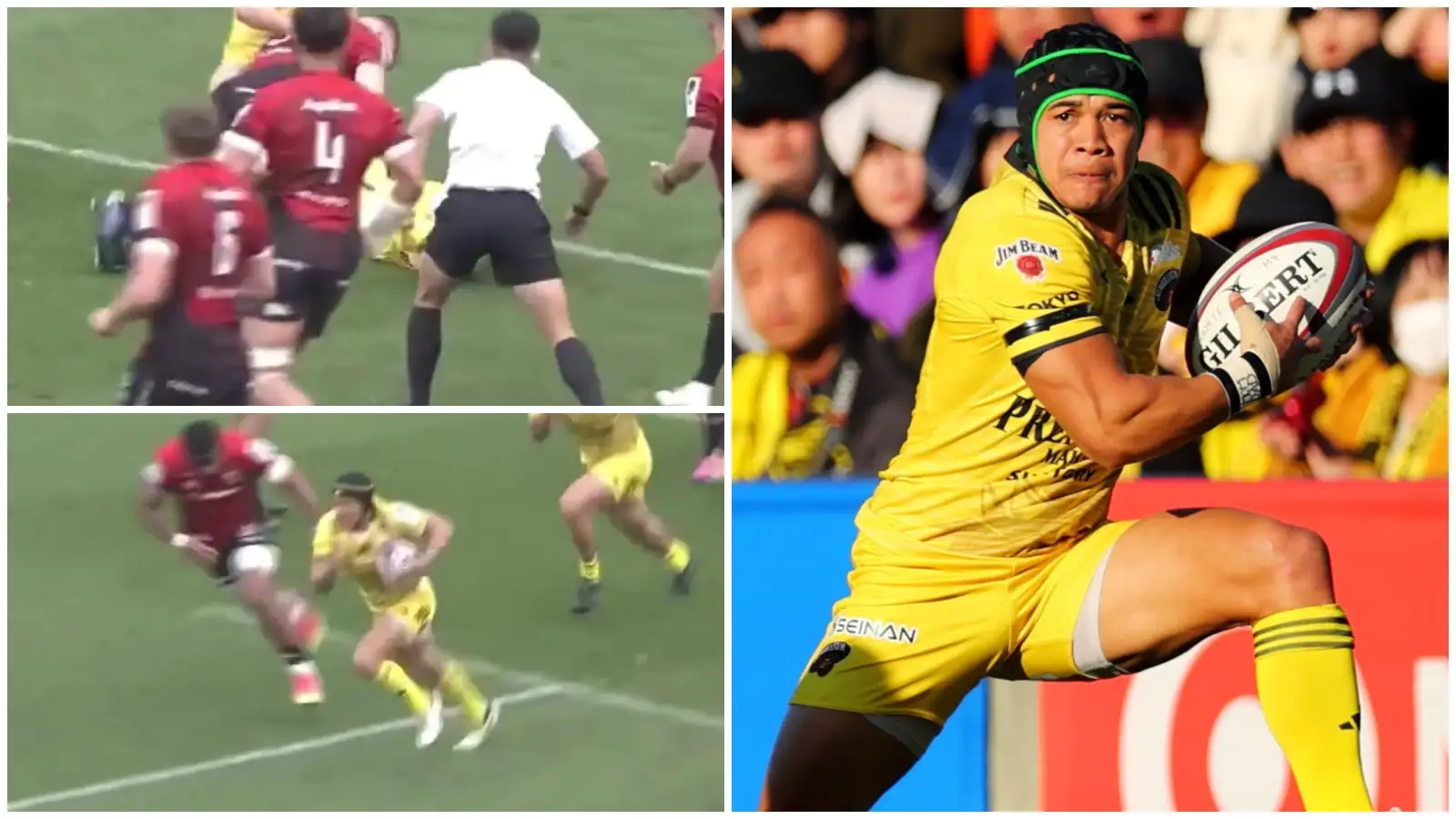Law discussion: Was Cheslin Kolbe’s charge down in the World Cup legal?
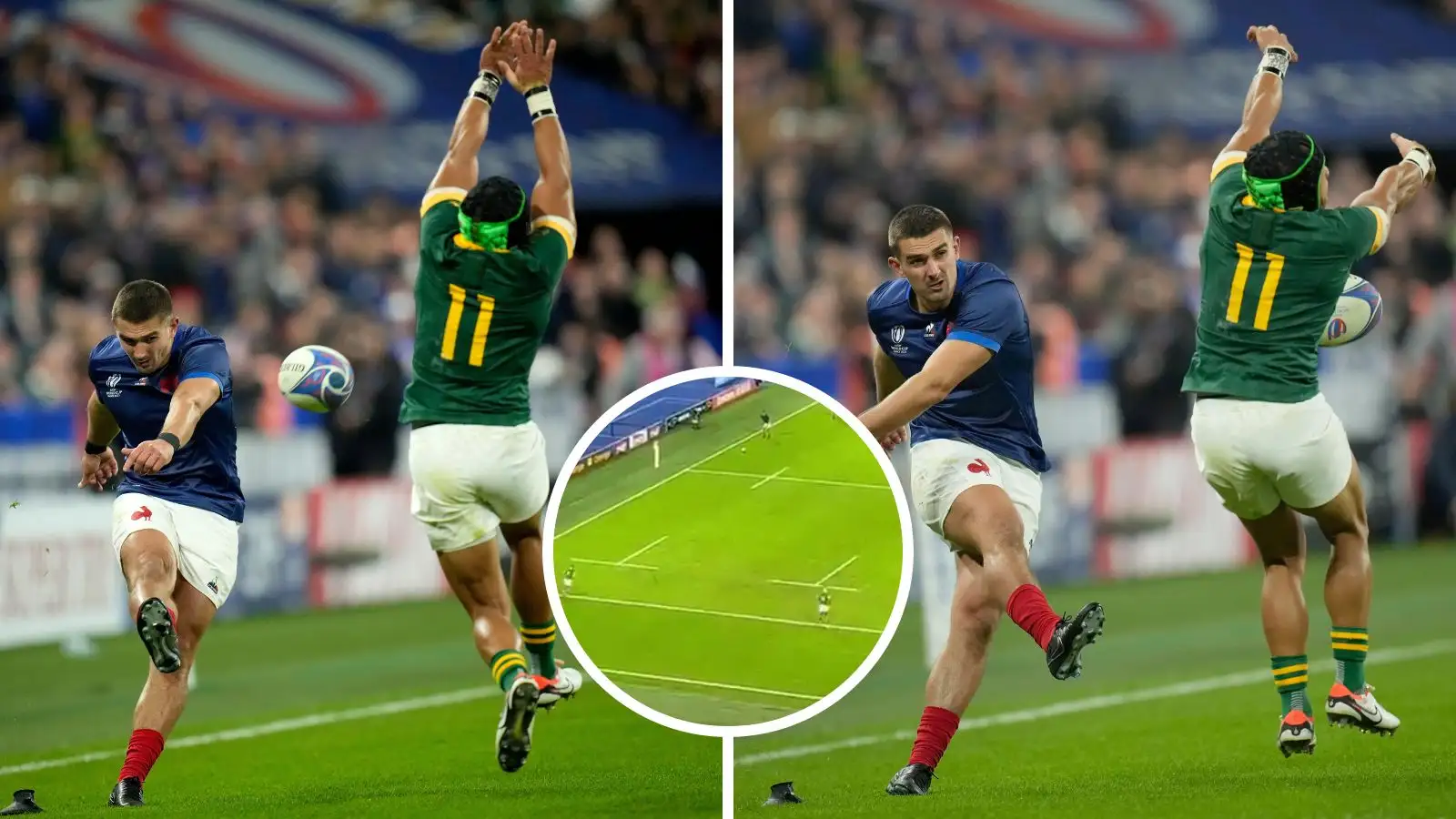
Cheslin Kolbe charging down Thomas Ramos' kick during the Rugby World Cup quarter-final.
This week’s law discussion takes a look at a couple of moments which barely ever see the light of day, yet this week appeared in the same game! And we look at the vagaries of the head contact treatment, which continues to be a problem.
Charging down
It probably happens once a season, if that. And so when it did, naturally, it became the subject of the hottest debate. In an age where kickers routinely tonk the ball over from 50m and where conversions are often a good 3.5 seconds of sprinting from the try-line, how did Cheslin Kolbe manage to get himself in the way of Thomas Ramos‘ kick?
Kickers are sticklers for routine: always the same way, always the same result, is the mantra. Thus do we have Damien McKenzie’s smiling assassin, Dan Biggar’s dance moves, and Owen Farrell’s distracted eyes.
In contrast to those above, Ramos is usually pretty up and down. A couple of steps back, a couple of steps to the side. A visualisation of the ball. But on Saturday, he was still, addressing the ball for a few moments. And then he adjusted his right foot towards his left one. And then he was still again.
The relevant law is law 8.14, which says, “All opposing players retire to their goal-line and do not overstep that line until the kicker begins the approach to kick. When the kicker does this, they may charge or jump to prevent a goal but must not be physically supported by other players in these actions.”
There have been two high-profile incidents comparable in recent years. Perhaps the most comparable was a controversial one a decade ago at a kick by New Zealand‘s Aaron Cruden. It was the last kick of the game to win the Test in Dublin, and Cruden, as Ramos did, adjusted his kicking leg slightly towards his planting leg.
This time, referee Nigel Owens waved the Irish players back, however, not counting Cruden’s action as the beginning of the kick approach. Cruden duly landed the retaken kick and won the game, much to Ireland’s disgust.
Two years prior to that, James O’Connor stood very still for some time before carrying on his routine of sizing up the kick in a match between the Barbarians and Australia, but Peter Stringer ran up to the ball and picked it up, believing that O’Connor had started his kicking action.
Peter Stringer was always a good man for knowing his laws.
The time he did this while James O’Connor was lining up a conversion 👏🏻 pic.twitter.com/6iLStO00kY
— Cian Tracey (@CianTracey1) January 22, 2021
That was bizarrely allowed, harsh on O’Connor at the time, but also ‘only’ a Barbarians game. Not the place to faff about in as O’Connor was. Anyway, the Cruden one is almost identical. Yet his twitch was not counted as the onset of the run-up.
So what does count as this exactly? How long is a kicker still before he is said to be formally addressing the ball? As ever, it is simply down to interpretation.
Ramos stood still for some time before he changed his stance. Upon which Kolbe decided to charge. And why not? That is what the law says he can possibly do. And Ramos’ was not a move that seemed to be any normal part of the kicking routine either, while what motion there was toward the ball. Kolbe was entitled to charge if Ramos left his marks. A gamble which paid off.
Fair play to Kolbe his charge down looks legal. Never saw any reply’s, but this clip clears it up for me. Ramos moved his foot & Kolbe did brilliantly! Serious Gas! Small margins! 👏👏👏 pic.twitter.com/8tFCxkwuE3
— Craig Minto Chalmers (@Chick_Chalmers) October 16, 2023
Negative pass
Milking offsides are an art form, and players are always having a go. From shouting ‘to your team-mates’ that the ball is slow because of the opposition is a regulation tactic these days, as is making sure possession heads towards those too slow to retreat.
Hanging around ‘unintentionally’ in an offside position is also a bit of an art form, but we’ve come a long way in terms of reinforcing such since the onset of the ‘lazy runner’ concept about two decades ago.
So when Ben O’Keeffe took Faf de Klerk to task for deliberately passing into an offside player, everybody’s eyebrows shot up. After all, wasn’t Cameron Woki actually offside here? Wasn’t he NOT actively trying to get out of the way as defenders are instructed to do?
Not so fast. The basic law explanations and definitions on World Rugby’s website say that “Being in an offside position is not, in itself, an offence, but an offside player may not take part in the game until they are onside again.”
Law 10.1 regarding offside also backs this up, saying, “An offside player must not interfere with play. This includes playing the ball, tackling the ball-carrier or preventing the opposition from playing as they wish.” But it also does not define simply being offside as an offence, only interfering from an offside position.
Woki did nothing in this situation except wait on the ground on all fours, waiting for play to move on. And then de Klerk threw the ball at him, hoping to get a penalty and expressing such.
Interestingly, Mr. O’Keeffe only gave the French a scrum – after Duane Vermeulen’s knock on which rolled into Eben Etzbeth for an accidental offside against South Africa – when, in law, he could have given the French a penalty under Law 9.7.c: A player must not do anything that may lead the match officials to consider that an opponent has committed an infringement.
He was clear in his explanation, too: “The guy you were passing to was nowhere near that line, you were trying to get the penalty.”
It had been a hitherto clean, hard, fast game of which all would have been proud; Mr. O’Keeffe was quite entitled to enforce the game as he wanted it. It was a brave, but good call.
Heads you win, heads you lose
The head contact protocols have been under the microscope far too much at this World Cup, unfortunately. But after the extremes of inconsistency in the first fortnight, we do seem to have found both common sense and a happy medium.
But the incidents involving Guido Petti and Vinaya Habosi on Marcus Smith bucked this trend.
Not that Karl Dickson was not correct in the Wales-Argentina game, far from it. He called it as he saw it: a rugby act gone wrong. Commentator Joel Stransky described it as the best piece of refereeing we’ve seen at the World Cup. A bit overdone, but given the number of ridiculous cards shown in recent history which have blotted games, you can understand his reaction. It’s nice to have a referee who appreciates what’s going on rather than just kowtowing to the protocols. All of which made Habosi’s yellow seem even more harsh.
Joe Marchant is over!
And Fiji are down to 14 with Vinaya Habosi in the bin 🟨#RWC2023 | #ENGvFIJ| @EnglandRugby pic.twitter.com/kuCnuampBw
— ITV Rugby (@ITVRugby) October 15, 2023
His tackling arm was down by Smith’s waist. He himself was bent, but he left his head upright, most likely on the basis of Smith’s big step. He was tackling a fast-moving, hot-stepping player of significant talent and speed, all at high speed, and Smith certainly changed direction just before the contact; evidently, that was the reason the card was not red.
But why was it even yellow? His shoulder and arm were far within regulation; his body was low – his trailing knee was almost on the ground at the moment of contact.
It seemed as though, once Smith’s pure white shirt had been sullied with a drop of Quins’ claret, the official observers were treading on eggshells, and a card was needed to match the outcome.
But this also was a rugby act gone wrong, with nothing technically wrong with the tackle, and should not have been censured. We have to be careful not to judge incidents on outcomes, but to continue to understand the balance between the laws and the game.
READ MORE: Loose Pass: Did we witness the best weekend of international rugby ever?
